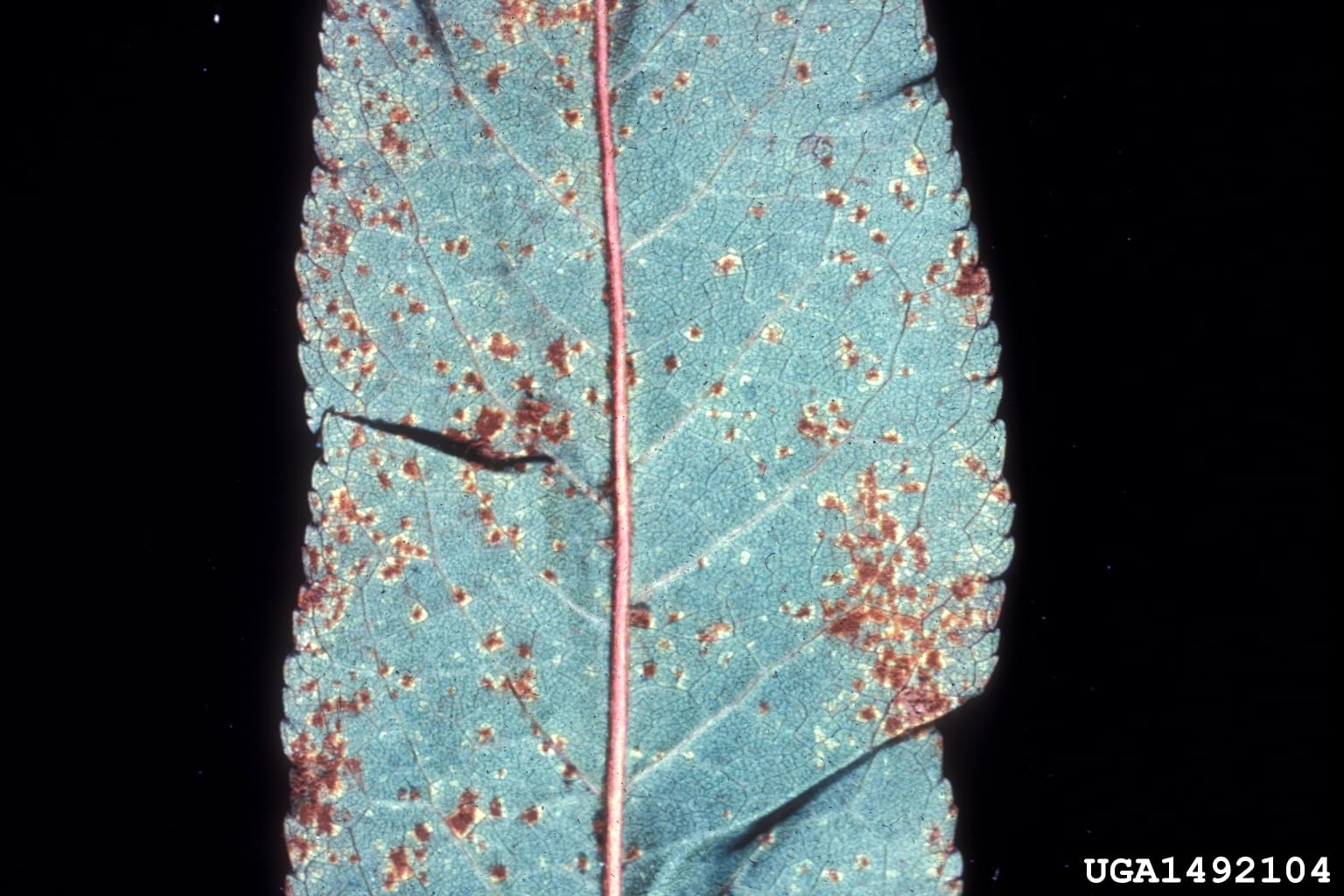Apricot Rust Control – How To Treat Rust On Apricot Trees


If you are growing apricots in your home orchard, you anticipate munching the luscious golden fruit. But when you own this fruit tree, you also may have to deal with apricot rust fungus. Rust on apricot trees is the most common disease of this fruit tree. If you have or want apricot trees in your backyard, read on. We’ll give you information on apricots with rust fungus and techniques for controlling apricot rust.
Apricots with Rust Fungus
Rust on apricot trees is caused by the fungus Tranzschelia discolor. As the fungus name suggests, rust discolors the apricot leaves. Look for the first symptoms of apricot rust fungus on the bottom side of the leaf. Mahogany colored blisters appear there, with a corresponding yellow splotch on the top surface. Apricots with rust fungus lose their leaves early. They turn black and drop from the tree late in the season. The tree ends up without leaves earlier than if it had lost its leaves normally.
Damage from Apricot Rust Fungus
When you see rust on apricot trees, you might want to rush into apricot rust treatment. But keep in mind that apricots with rust fungus don’t die right away. In fact, small rust infestations may do no harm at all. Even severe infestations may damage the tree’s growth but don’t kill it. That means that you have time to figure out how to prevent rust before using chemical sprays. Taking steps to prevent the disease is really the best way of controlling apricot rust.
Apricot Rust Treatment
When you are thinking about controlling apricot rust, your best bet is to take steps to prevent conditions that encourage rust. Rust likes moisture and cool weather, so keep your trees in bright sunlight and spaced apart to allow air circulation. On top of that, prune your apricot trees so that as many leaves as possible get sunlight. Raking up fallen foliage is also an important part of controlling apricot rust. For future plantings, pick cultivars that are rust resistant. If rust returns year after year, you’ll have to use apricot rust treatment. Find a fungicide specifically made for apricot rust and use it according to label directions. Spraying starts in spring before the buds flower, then is repeated at regular intervals through the season. Note: Any recommendations pertaining to the use of chemicals are for informational purposes only. Organic approaches are safer and more environmentally friendly. Chemical controls should only be used as a last resort.
Gardening tips, videos, info and more delivered right to your inbox!
Sign up for the Gardening Know How newsletter today and receive a free copy of our e-book "How to Grow Delicious Tomatoes".

Teo Spengler is a master gardener and a docent at the San Francisco Botanical Garden, where she hosts public tours. She has studied horticulture and written about nature, trees, plants, and gardening for more than two decades. Her extended family includes some 30 houseplants and hundreds of outdoor plants, including 250 trees, which are her main passion. Spengler currently splits her life between San Francisco and the French Basque Country, though she was raised in Alaska, giving her experience of gardening in a range of climates.
-
 5 Tough Urban Trees That Thrive In Cities – Top Picks For Urban & Suburban Landscapes
5 Tough Urban Trees That Thrive In Cities – Top Picks For Urban & Suburban LandscapesExplore the best urban trees that will add value to even the most challenging of landscapes. Get growing with these ideas and enjoy all the benefits of trees.
By Teo Spengler
-
 7 New & Improved Cultivars Of Old-Fashioned Plants – These Aren’t Your Grandma’s Plants!
7 New & Improved Cultivars Of Old-Fashioned Plants – These Aren’t Your Grandma’s Plants!Old is new again! These old-fashioned plants have new cultivars that are sure to thrive in your garden and bring the charm factor. Neighbors will be envious!
By Mary Ellen Ellis